
Thousands of scientists studied and continue to study how ants find their way home. And not just like that: in this ability of insects, many mechanisms are involved, allowing a new look not only at the world of insects, but also at the abilities of the person himself.
As it turned out, the ants find their way home at once in several ways. They use for this:
- orientation by the sun, although most people by the sun are unlikely to be able to navigate in space
- memorization of landscapes and various objects
- chemical methods
- Built-in pedometer
- Earth's magnetic field.
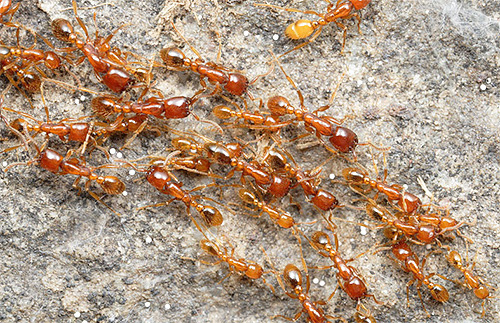
And, as myrmecologists (scientists studying ants) carefully note, they fully admit the existence of other mechanisms that allow ants to unmistakably find their way home, but not yet studied by man.Although each of the methods noted above is in itself very effective and can provide ants with unmistakable navigation.
On a note
The scientists call the word “homing” (from English. Home - the house). It is particularly pronounced in salmon, which unmistakably find the river in which the eggs fry hatched from caviar, after many years of dwelling in the oceanic expanses.
Chemical tags on routes
All ants, without exception, use the chemical method of orientation. They are generally characterized by high sensitivity to odors and a tendency to chemical communication. The ants do not emit sounds, and in some species the working individuals are completely blind, and smells for them remain the only way to communicate, search for food and orienteering in space.
Ants use different pheromones specific for each species and for each situation to communicate and form tags. Including - for marking routes.

It is interesting
Smells are also used by many slave-owning ants and insects that parasitize anthills. For example, having learned to produce pheromones characteristic of a particular species of ants, they penetrate their homes and there either feed on ant supplies or their eggs, or kidnap larvae, or simply live in conditions comfortable for them.
For the return to the anthill, each ant as it moves leaves microscopic smell marks. And the paths along which insects move especially often look for them, as for humans - highways. And "trodden" once - as if a path in the forest.
The topochemical feeling in ants is also very important, thanks to which they can determine not only the smell of the tag, but also its size and direction. Even dogs have no such subtlety of smell: a hunting dog, having stumbled on the trail of a hare, can make a mistake in the direction of the prey movement. When an ant encounters a chemical tag, it will know exactly where the previous and next marks are, and in which direction the anthill lies and in which is the source of food.
You should not consider this ability of ants as pheromones drawing peculiar arrows. This is a visual interpretation of such a phenomenon, but it works according to the same principle: all necessary information is encoded in the quantity of odorous substance and its smell for an insect.
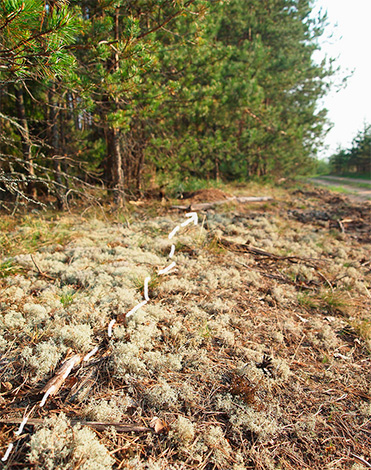
On a note
In order to confuse the ants, it is enough to “kill” the smell of their road mark with a stronger aroma. Simply splashing the trail with deodorant is enough for this. However, thanks to the innate diligence of the ants very quickly restore the original path.
Thus, each ant path is a peculiar road with a large number of direction indicators, which are understandable to each working individual.
Physical objects as reliable landmarks
Memorizing the location of various objects and elements of the landscape, so understandable to us, is also characteristic of ants. However, given the size of the insects themselves, this method of orientation has some peculiarities.

- Ants memorize objects of their own scale: grass bushes, single stones, cracks in the ground. It would be too rash to expect them to navigate through buildings and rivers.
- The system of original images of the territory of the ant is actively complemented by navigation through the heavenly bodies. In laboratory experiments, it was found that if the ant feeding area with the anthill is rotated relative to the Sun, without changing the position of landmarks, the insects are confused.Of course, in the nature of such situations does not happen, which makes such a system very reliable: if around the anthill seriously change the landscape (to clear, for example, grass), the insects will still orient around the Sun.
Interestingly, some ants actively train their comrades to find their way home and the plot with food. Moreover, such training is not at all like the simple following of one forager (a member of an anthill specializing in getting food) after another: if the “student” lags behind the “teacher”, the teacher waits for him and helps to find the best way.
Orientation of the Sun
The ability of ants to navigate the Sun is very complex and is still being actively studied.
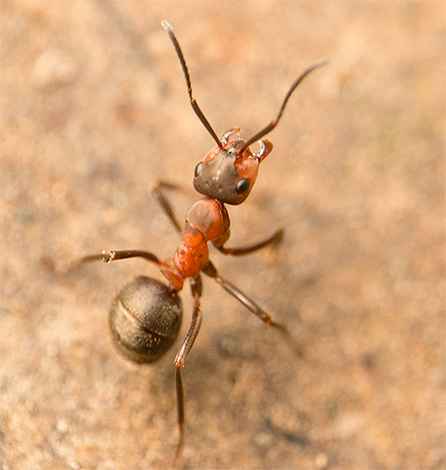
First, ants can take into account the direction to the sun, even with short and small movements.
Secondly, these insects are able to make allowances for the displacement of the star over time. Even if the ant escapes from the anthill in the morning, and returns only by noon, he will take into account that during this time the sun has risen above the horizon.
Thirdly, in the eyes of ants there are special cells that take into account the direction of sunlight.So they do not have to do any calculations: their brain itself receives information from the target cells and makes the necessary amendment.
Landmark - Earth's magnetic field
It is still not definitively known whether all ants use orientation on the Earth’s magnetic field, or only leaf-cutting ants that have been studied specifically for this purpose. But as a result of the experiment, it turned out that if the smell marks were violated and in the absence of sunlight, the behavior of the ants could be changed by introducing certain interferences in the magnetic field in the area of insect movement.
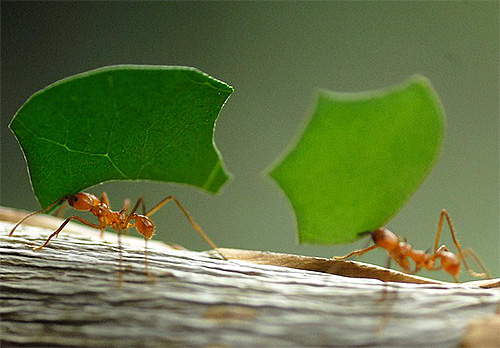
Most likely, any of the ant's organs works in the compass mode, picking up the direction to the north, which, when combined with other systems of orientation, helps the insects to find the direction of motion they need. With it, the ants find their way home even at dusk, when the sun is already hiding behind the horizon.
Ants are finding a home ... counting the steps!
And this discovery in the field of ant behavior turned out to be the biggest surprise for ethologists: many species of ants to search for food count the number of steps taken in a certain direction.Today, scientists even believe that ants are counting the steps between each turn.
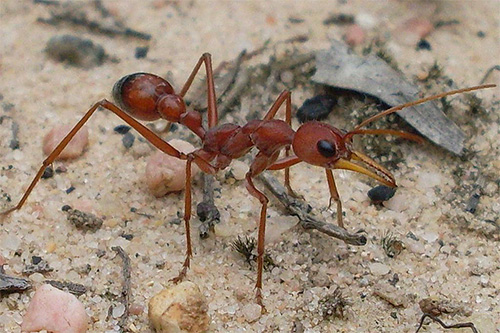
This ability was discovered by a research group that did not conduct the most ethical experiment: several ants from the same anthill had their legs cut, and several more - miniature stilts were glued to the legs. The group of "short-legged" ants were ending their way to the stern, not reaching it, while the group of "ants on stilts" successfully ran through the area with food and began to search for food further, where there is none.
In most species of ants, when searching for the road home and in general, when orienteering in space, several of the methods described above are combined, if not all, which improves the accuracy of finding the desired route. For many ants, this is especially important. For example, representatives of the species inhabiting deserts risk simply burning in the sun or dying from dehydration on the surface of the earth with a temperature of about 50 ° C, if they fail to return to the cool hole at the right time.
It is possible that ants in the future will give people a few more surprises in the field of orientation in space.
Interesting video: an example of how ants trail rich prey home


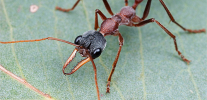
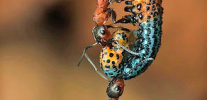
Murahi tse horror.